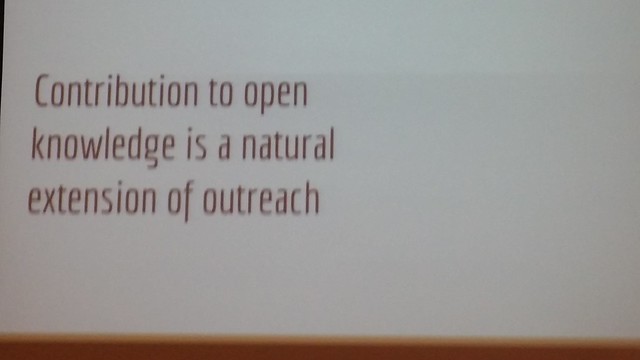Innovative approaches to opening up cultural heritage collections for education #OER16
The session at 11.30 – 1 p.m. on Tue, Apr 19 2016 was on the theme Innovative approaches to opening up cultural heritage collections for education
Wikimedia UK, cultural heritage and education
Kamil Liwowski @kasliwowski [email protected] spoke about public domain projects in Poland and the difficulties for information seekers searching for the open versions of public domain materials that were often encountered first as paid-for content, not just by individuals but also by public institutions.
Teachers may be looking for images that aren’t photos and are free to remix – within 5 seconds. Searching within different collections tends to throw up 1000s of images, making it difficult to choose, sometimes encountering login barrier. Projects work on how to assist teachers on how to encounter and explore the massive, rich digitised cultural connections in contrast with wikimedia resources, located in context, or via bloggers and other social media publishers who act as content curators.
Campaigns are needed to promote what is available and how to use it: also open policies in cultural institution
Cultural institution AKA GLAM for more OER
Subhashish Panigrahi @subhapa , who works for Wikipedia in Bengalaru, India characterised knowledge as something that starts open and becomes increasingly restricted by copyright. Subhashish contrasted Indian government approach to data and resources as copyright by default with other countries such as UK. This approach increases administrative workload.
He encouraged us to consider life without OER , highlighting the Galleries, Libraries Archives and Museums (GLAM) movement that aims to digitise content for cultural studies. GLAM has shared learning and methodology that is also a resource. GLAM has its own formal training that could be documented better to improve practice across countries. OER movement works by collaboration across individuals and institutions.
Sara Thomas @lirazelf , wikimedian in residence has been working across museums and galleries
Scotland’s Museums and Galleries have a national strategy and the project has played a part in fulfilling the strategy. There have also been unforeseen outcomes, including working with educational institutions as well as cultural heritage organisations. They found that participants increased in confidence in working in open knowledge, and will be interested to do more work in future.
I looking to the future, Sara thinks we need to have courage and to keep helping people in the sector, but the future holds hope.

